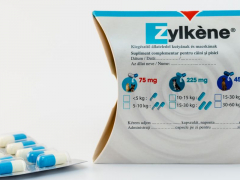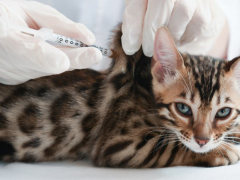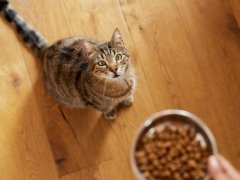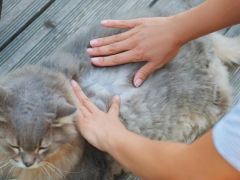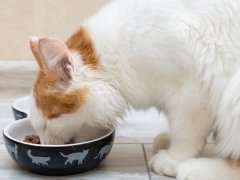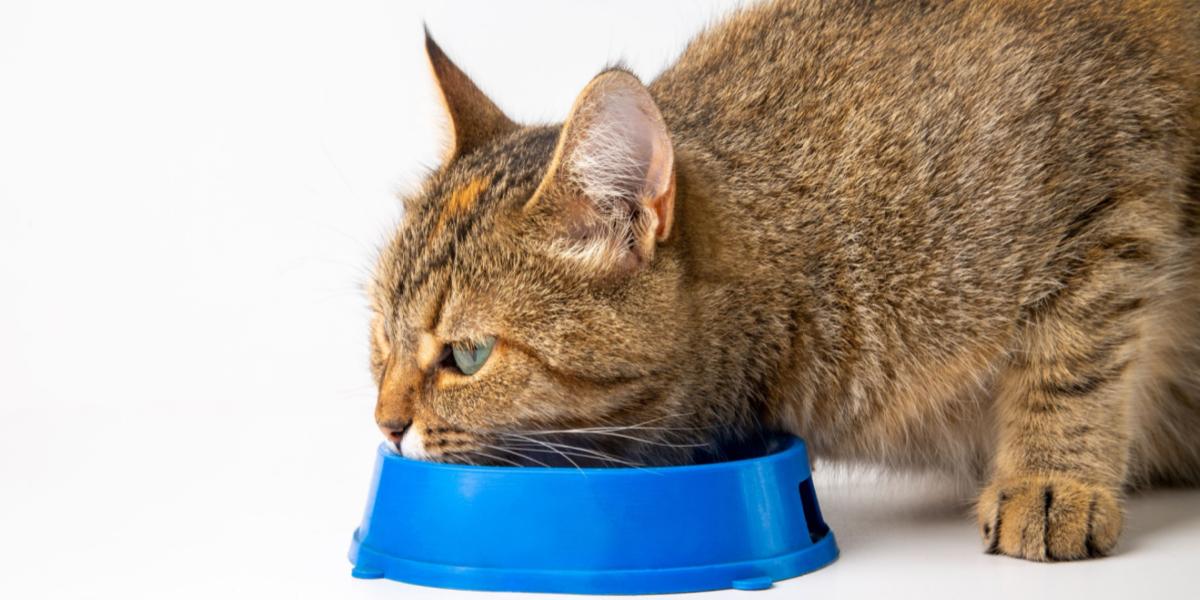
Lactulose is a liquid medication used most often to help manage constipation in cats. Common brand names include Cephulac and Kristalose. In this article you’ll learn how lactulose works, situations where it is used, possible side effects, and some frequently asked questions.
Quick Overview: Lactulose for Cats

About Lactulose for Cats
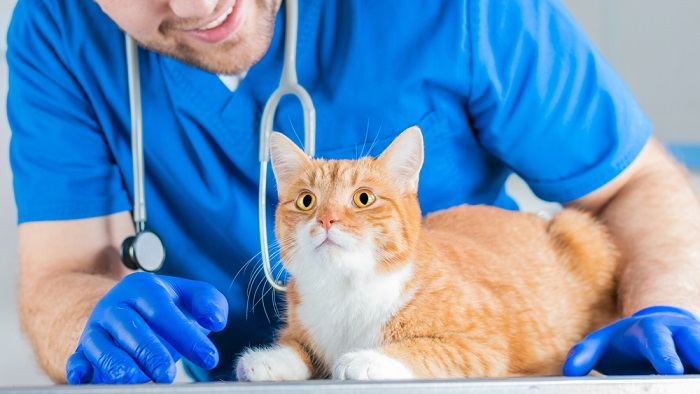
Lactulose is a medication most commonly given off-label to relieve constipation in cats.
Lactulose is classified as a nonabsorbable disaccharide osmotic laxative. It is also considered an ammonia detoxicant. Ammonia is a byproduct of protein breakdown in the body.
Typically, the liver is able to remove excess ammonia from the body, but if either too much is being produced or if there is an issue with liver metabolism, excess ammonia in the bloodstream can lead to ill effects. As a neurotoxin, hyperammonemia can lead to neurologic signs of disease.
Lactulose is metabolized by normal flora bacteria in the colon, which helps to acidify contents in the colon. This naturally leads to ammonia migrating from the bloodstream into the colon, allowing excess ammonia to then be expelled in the stool. In this way, lactulose can be used in medical cases where too much ammonia is being produced or if it is not being removed properly from the body.
Lactulose also acts as an osmotic laxative, meaning that it pulls water into the colon, helping to soften feces and make it easier to poop. It achieves this also by being metabolized by bacteria in the colon, which leads to the production of free fatty acid compounds that increase the osmotic pressure in the bowel.
Also Read: Vet-Approved Cat Stool Chart: Decoding Your Cat’s Poop
What Does Lactulose Do for Cats?
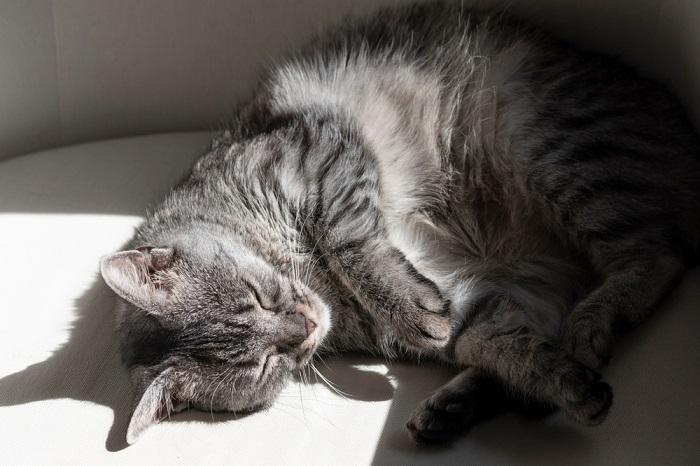
Lactulose can help to remove excess ammonia from the body, making it useful for cats with hepatic encephalopathy.
Lactulose’s ability to help remove excess ammonia from the body is primarily used in cases of hepatic encephalopathy. Hepatic encephalopathy is a general condition of the liver that can have several causes. These may include a blood vessel called a portosystemic shunt that allows blood to bypass the liver metabolism, sudden acute liver failure, and severe drug-related effects.
In all of the causes, there is an issue with the liver (hepatic) that leads to excess ammonia in the bloodstream. Hepatic encephalopathy resulting from absorption of ammonia can cause a variety of symptoms in cats including lethargy, digestive illness, behavioral changes, and neurologic signs like seizures, head-pressing behavior, and trouble walking.
In cats, lactulose can be given orally to remove excess ammonia from the body to help prevent the signs of high ammonia levels if hepatic encephalopathy is present. Because there can be many causes of hepatic encephalopathy and hyperammonemia, lactulose is not typically the only medication needed but is one of the most important to prevent the neurologic effects of too much ammonia in the body.
Far more commonly, lactulose is used as a laxative for cats experiencing constipation.
Constipation in cats can have many underlying causes, so another treatment to address an underlying condition is also important, but lactulose can help to draw water into the bowel to help soften stool and make defecation easier.
For cats with chronic constipation issues, cats with a history of obstipation (fecal blockages), or cats with megacolon where stool does not move properly through the colon, lactulose may be given on a regular basis.
While it is a good laxative, lactulose’s main disadvantage is that it comes commonly as a sticky liquid that many cats don’t find very tasty. The liquid should be given directly by mouth, which can sometimes be a messy, sticky struggle. It also must be given more frequently a couple of times a day in most cases.
Also Read: How To Tell If A Cat Is Straining To Poop Or Pee
Side Effects of Lactulose for Cats
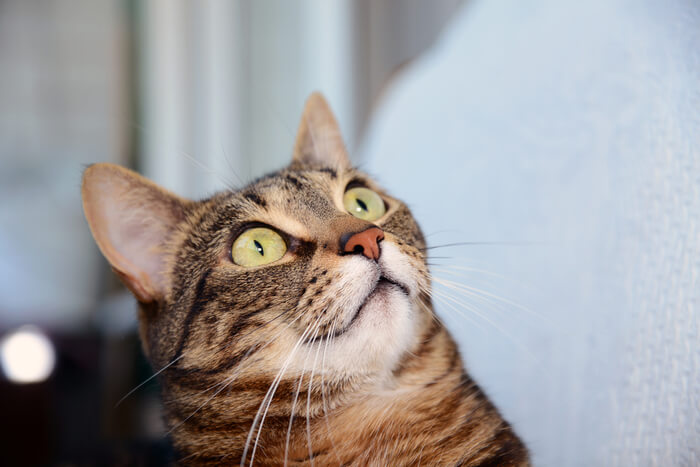
Like most medications, lactulose comes with some potential side effects.
Some possible side effects of lactulose include excessive gas, flatulence, stomach distention, and cramping. Because lactulose forms free fatty acids from bacterial fermentation, it is also considered a prebiotic. This process can lead to the bacteria producing more gas from metabolizing the drug.
Fortunately, this side effect may only be seen more early on, generally abating with time.
The dose of lactulose should be catered to the needs of the cat and the quality and consistency of stools. High amounts of lactulose can lead to diarrhea, and resultant dehydration and electrolyte changes.
Due to the potential for electrolyte changes, lactulose should be used carefully in any cat with pre-existing electrolyte disturbances.
Lactulose should not be used in cases of intestinal obstruction, such as in cats with obstipation. Obstipation is where a cat is so constipated that the stool is actually causing a blockage. If a bowel movement does not occur within 24 hours of giving lactulose, especially if your kitty appears very uncomfortable or has a decreased appetite, check with your veterinarian before continuing use of lactulose or any other laxative.
If you have any concerns for potential side effects from lactulose use, it is always best to contact your veterinarian, the ASPCA Animal Poison Control Center (1-888-426-4435), or Pet Poison Helpline (1-855-764-7661) immediately for further advice.
Also Read: Poisoning In Cats: Causes, Symptoms, and Treatment
Lactulose for Cats Dosage
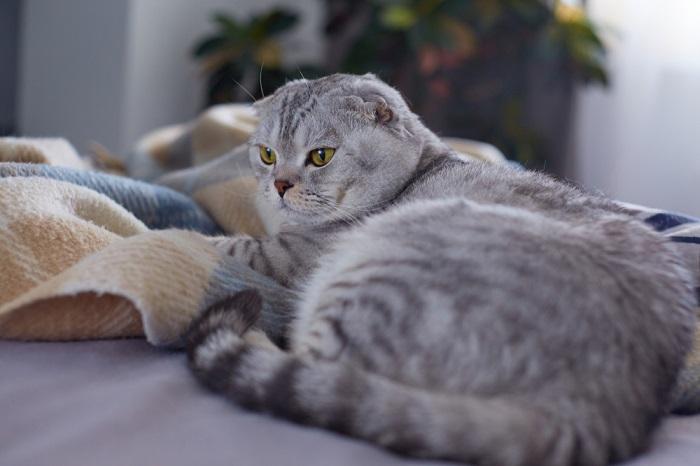
Lactulose is not FDA-approved for use in pets, so it’s used extra-label for cats.
Lactulose is not a medication FDA-approved for use in pets, and so all use is considered extra-label in cats. With dosing and frequency, because there is so much variability for lactulose, it’s important to check with your veterinarian on the best dosing and frequency for your kitty, but some guidelines are included here with the goal of avoiding over-use.
The dose for lactulose for hepatic encephalopathy is 1-3 milliliters per 10 kilograms (not per a single kilogram). This is important to understand, as most cats will not need a dose over 0.5 to 1ml per dose. Much larger or overweight cats close to 20lb may need higher doses of 1-2ml.
Frequency can vary from every 6-8 hours depending on the situation. Staying in touch with your kitty’s vet is important to report improvement of any related signs of hepatic encephalopathy to determine dose adjustments. The dose for hepatic encephalopathy should otherwise not be adjusted, once a dose managing the symptoms is found that does not lead to loose stools or diarrhea.
Also Read: What To Do If You See Blood In Your Cat’s Stool?
For constipation, the dose for most cats is 2-3ml per cat, every 8-12 hours. For constipation, the dose may be adjusted depending on the quality, consistency, and frequency of stools.
In addition to the liquid formulation of lactulose, lactulose crystals can also be used by adding them to a cat’s food. Because the liquid lactulose should be dosed directly by mouth and some cats are very resistant to being dosed with the liquid medication, this dosing strategy may be more effective.
For the crystals, the dose is approximately ¼-½ teaspoonful per cat. This equates to approximately 1-2.5 ml per cat. For constipation, the dose can be adjusted to obtain the stool quality and consistency needed.
Also Read: Best Cat Food For Constipation
Conclusion
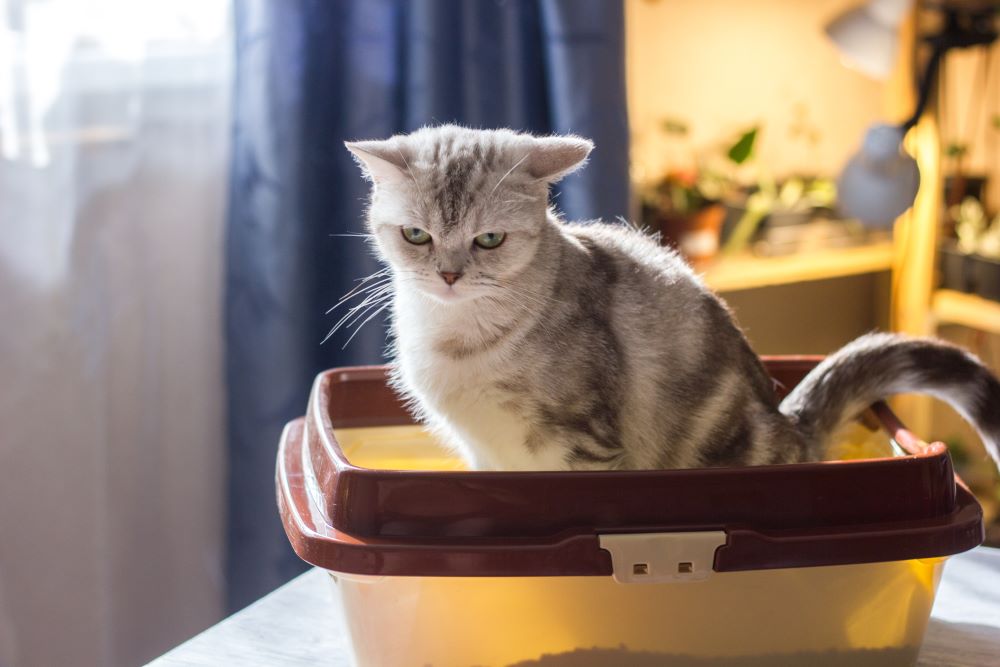
Overall, lactulose is typically a safe, effective medication for cats with constipation or issues causing ammonia buildup in the bloodstream.
Lactulose is a very useful medication used most commonly for cats suffering from constipation. It can also be used to remove excess ammonia from the body from hepatic encephalopathy that occurs from certain disorders of the liver.
The liquid is sticky and messy and can be challenging to administer, but the crystals may provide a viable alternative. Lactulose is generally safe to use but may need adjustment to prevent excessive gas and diarrhea.
Also Read: Neomycin For Cats: Overview, Dosage & Side Effects
Drug Dosing Disclaimer: We are only able to provide doses for medications that are FDA approved for use in cats and only as the label guidelines dictate. For medications that are used off-label we can only provide guidelines and safety information for use. Safe and appropriate dosing for off-label medications can only be determined by a primary care veterinarian.
We encourage you to work with your veterinarian to determine if a particular medication is appropriate for your cat. Changing or adjusting a dose for your cat on your own without consulting with a veterinarian can carry risk. We do not encourage use of medications prescribed for human use in pets without first consulting with a primary care veterinarian.
Frequently Asked Questions
How Long Does It Take Lactulose to Work in a Cat?
This may depend on the use for lactulose. For hepatic encephalopathy where the goal is removing excess ammonia, it may take 12-24hours for the product to reach the colon and be metabolized by bacteria.
Similarly for constipation, it also must reach the colon to provide its osmotic laxative properties. Generally for constipation, a stool should be seen within 12-24 hours. If not, the dose may be increased per a veterinarian’s instructions. If a stool is still not seen, and especially if appetite is decreased or vomiting is present, a kitty should be examined by a veterinarian as soon as possible.
What Does Lactulose Do for Cats?
Lactulose acts both as an ammonia scavenger, helping to pull ammonia out of the bloodstream and into the feces for removal from the body, as well as an osmotic laxative where it helps to pull water into the colon to soften stool and make it easier to poop.
How Much Lactulose Should You Give a Cat?
The dose is very variable depending on whether the treatment is for ammonia removal from the body or for constipation. Generally, most cats may need about 2ml given every 8 hours. However, depending on weight and quality of stool that’s desired, this dose may need to be higher or given more frequently.
With any medication, it is best to consult the prescribing veterinarian for advice on making dosage adjustments.
Can Lactulose Be Harmful to Cats?
If given in excess, lactulose can lead to diarrhea, dehydration, and electrolyte abnormalities. This is why it should be adjusted for the dose most effective for desired stool quality. Lactulose should also not be given in cases of stool blockage (obstipation) or other bowel obstruction in cats. If a cat does not produce a stool within 12-24 hours of use, you should contact your veterinarian for advice or have your kitty examined.
